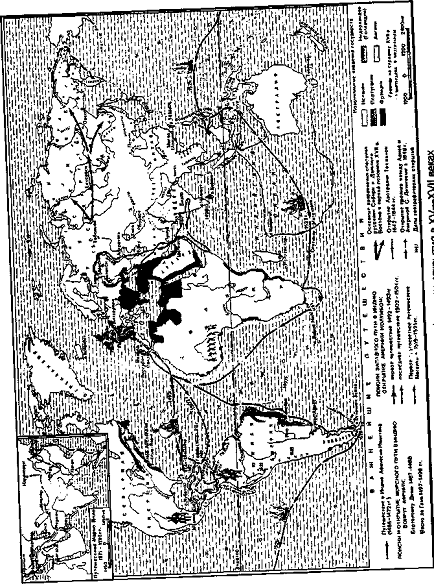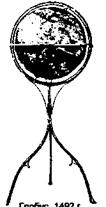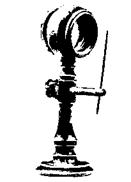home
 Economy Economy
 Books Books
 History of the world economy - Polyak GB History of the world economy - Polyak GB
|
History of the world economy - Polyak GB
Manufactories
At this stage of feudalism, a new form of production organization - manufactory, appears, which in Latin means "hand-made article, hand-made production". Manufactory is a capitalist enterprise, where the same instruments of labor as in the craft were used. But there was already a division of labor. Workers performed only individual operations, and this contributed to a significant increase in labor productivity. The detailing of operations and the improvement of the hand tools in the manufacture reached such a high degree that they led to the creation of the working mechanism of the machine, and thus also to machine production. In manufactories, wage labor was used. It was free from guild restrictions and regulations, which also contributed to the development of production. The organizers of the manufactories were people who owned the necessary funds - merchants, moneylenders.
There were three main types of manufactories - centralized, scattered and mixed.
Centralized manufactory is a large capitalist enterprise in which tens or even hundreds of workers were employed. This type of manufacture was primarily spread in such branches of production, where the technological process involved the joint work of a large number of workers who performed various operations (textile, mining, metallurgy, printing, sugar, paper, porcelain production, etc.). The owners of the centralized manufactories were mostly rich merchants and much less often - former shop craftsmen. Large centralized manufactories were also created by the state, for example, in France.
The scattered manufactory was a type of enterprise where the merchant-entrepreneur used the labor of small handicraftsmen-homeworkers, supplying them with raw materials and selling their products. This type of manufactory was most prevalent in the textile business in places where shop restrictions did not apply. Often primary processing was performed by homeworkers (for example, spinning), after which the most responsible operations were performed in the manufacturing workshop, for example, dyeing and finishing of finished fabrics. It was a type of mixed manufactory.
Manufactories arose in Europe in the fourteenth and sixteenth centuries, in the cities of the republics of Italy, and then in the Netherlands, England, France and other countries. In Florence, they were sherstock and cloth shops, in Venice and Genoa - shipbuilding, in Tuscany and Lombardy - mining copper and silver mines.
However, in the cities-republics of Italy the manufactories did not take shape in the system of capitalist production. In England manufactories produced woolen fabrics, shoes, metal products (needles, knives, locks, wire). Large manufactories existed in shipbuilding, a little later in the mining industry (extraction of hard coal, iron ore, tin, lead) and metallurgy. A significant part of the products was exported.
The feudal absolutist monarchy
During the period of the expansion of feudalism, the form of the feudal state changed - the estate monarchy in most European countries gave way to absolutism.
The royal power grew to such an extent that it was able to subordinate its domination of the feudal aristocracy and rule the country with the help of a bureaucratic apparatus. The estate-representative bodies lost their significance. Legislation, taxes, foreign policy became the prerogative of the central government.
At the disposal of the absolutist monarchies were enormous financial resources received from the taxation of peasants, the urban population, including the bourgeoisie. This gave the king the opportunity to maintain a bureaucratic apparatus, a standing army.
The social foundation of the absolutist monarchy was the nobility, whose interests it defended. However, the feudal nobility did not want to allow excessive strengthening of royal power and its bureaucratic apparatus. The monarchy found support in the opposition feudal lords of the political force - the nascent bourgeoisie. The bourgeoisie gave the state power to the cadres of the bureaucracy of the bureaucracy and provided it with financial means in return for those great benefits that it received from the protectionist and mercantilist policies of absolutism.
In England and France, already in the XVI century. Centralized national states, absolutism played a positive role in the development of national industry and trade, as well as in the completion of political centralization. In Spain, for example, where the emerging capitalist mode was extremely weak and the country's political unification is far from complete, absolutism failed to solve similar tasks in the field of economic development and national-territorial cohesion. In Germany and Italy, absolutism was able to establish itself only within certain territorial entities, creating obstacles to the national unification and economic development of countries.
This form of state structure did not play historically a progressive role for a long time. When the bourgeoisie got stronger and started claiming political power, absolutism passed to the policy of suppressing and plundering the bourgeoisie. In turn, the bourgeoisie, expressing the interests of progressive sections of society, led an open struggle against absolutism and the forces of feudal reaction. This irreconcilable conflict found its solution in bourgeois revolutions.
Preconditions and consequences of the Great geographical discoveries
The factor that greatly accelerated the disintegration of feudalism was the Great geographical discoveries of the late 15th and early 16th centuries . The most important of them were:
• The discovery of America by H. Columbus in 1492;
• the opening of the sea route to India - Bartholomew Diaz (1486-1487), Vasco da Gama (1497-1498);
• The discovery of North America by J. Cabot (1497-1498);
• the first round-the-world navigation of F. Magellan (1519-1522). Great geographical discoveries were prepared by the whole course of Europe's economic development.
At the end of the XV century. European trade with the countries of the East is going through a crisis - as a result of the formation of the Ottoman Empire, the trade routes of the Mediterranean were closed. On the other hand, in the XV century. In Western Europe, the lack of gold and silver as a means of circulation became acute.
The impoverished nobility rushed to search for new trade routes and gold, which constituted the bulk of the conquistadors (conquerors).
Absolutist state, in need of money for the maintenance of bureaucracy, the mercenary army, financed sea expeditions.
An important prerequisite for the great geographical discoveries were the successes of European science and technology. First of all, the development of shipbuilding and navigation technology. By the end of the XV century. The best ship was a caravel - a mobile three-masted vessel, designed for ocean voyage. In the XIV-XV centuries. Navigation instruments - compass and astrolabe were improved, geographic maps were refined.
Geographical discoveries have led to profound changes in the economy of Europe.
There has been a significant expansion in the sphere of world trade. If by 1400 Europeans knew 50 of 510 million square meters. Km of the earth's surface, then by 1500 the surveyed area reached a million square meters. Km, and by 1600 - 310 million square meters. Km.
The commercial development of new lands led to the inclusion in the world commodity turnover of products previously unknown to Europeans - tobacco, cocoa, coffee, tea, rice and especially sugar. The volume of trade increased significantly. If the Venetians annually delivered to Europe more than 200 tons of pepper, immediately after the opening of the sea route to India, Lisbon began to bring up to 7,000 tons of spices.
Great geographical discoveries led to the movement of trade routes to the oceans - the Atlantic, Indian and Pacific. In the center of the world trade routes were "Spain and Portugal. New trade routes along the Atlantic Ocean have raised the importance of the Netherlands, Britain and France in international trade.
With the expansion of trade, the emergence of many new products, the expansion of manufactory production, new forms of trade organization have emerged. In Europe there was a constantly operating market - the stock exchange.

Great geographical discoveries in the XV - XVII centuries
The formation of exchange business dates back to the XIII century, when in Holland and Italy it became practicable to pay for supplies through the money changer. The appearance of the term "exchange" is associated with the von der Bierz family of Bruges, whose house was the place of permanent meetings of merchants.
The first organized commodity exchange was established in Antwerp (1460). At first it was a special area for transactions, and in 1531 the building of the exchange was erected. Securities were traded on the stock exchange. There were branch exchanges that specialized in trading operations with wool and cloth.
After the defeat of Antwerp by the Spanish in 1576, the Amsterdam Stock Exchange became the main international stock exchange. By this time, the technique of exchange transactions with securities became more complicated. In 1608, the Amsterdam Stock Exchange introduced for the first time in circulation shares.
As a result of the Great geographical discoveries, a system of colonialism has developed.
"Price revolution"
One of the consequences of the Great geographical discovery was the "price revolution" caused by the influx of gold and silver into Europe. During the XVI century. The influx of gold from America to Europe has more than doubled, silver - more than three times. As a consequence, in Spain prices rose 4.5 times, in England - 4 times, in France by the end of the XVI century. - 2.5 times, in Italy and Germany - 2 times. At the same time, prices for agricultural products have grown to a much greater extent than industrial products, while necessities have risen in price more than luxury goods. Such a rapid rise in prices is explained by the cheapening of the precious metals themselves, which cost almost nothing to the conquerors.
The "price revolution" had important socio-economic consequences. It had a profound influence on all European countries and the economic situation of the estates of feudal society. It became the most important source of the initial accumulation of capital.
In Spain, due to the rise in price, many products have become uncompetitive. This was one of the reasons for the decline of Spain's industry and trade. At the same time, thanks to the "price revolution", the Dutch merchant class, which was engaged in intermediary trade, rose.
The "price revolution" had a great influence on the industrial development of some countries, accelerating the transition to manufactory capitalism. There was a sharp drop in the real wages of workers, since its nominal value in England increased by only 30%, and in France - by 25%.
Significant changes have occurred in the agricultural sector of European countries. The depreciation of fixed monetary dues began, which led to the impoverishment of the nobility and the further disintegration of the feudal system. The rise in prices for agricultural products led to an increase in rent. The question arose of the abolition of peasant holdings. The "new" nobility in England took the path of resolutely breaking down the feudal system of landownership, purging the manors from peasant allotments. Only those feudal lords who adapted land for rent (monetary, share) were accommodated to new conditions, they collected the dues as a share of the harvest (champagne in France).
The first scientific revolution. XVI-XVII centuries.
XVI-XVII centuries were the most important stage in the development of science. A decisive role in this was played by the needs of emerging capitalism. During this period, the dominance of religious thought was undermined, and as the leading method of research, an experiment / experiment was established that along with observation radically expanded the scope of the cognizable reality.
At this time, theoretical reasoning began to be combined with the practical development of nature, which greatly increased the cognitive capabilities of science. This profound transformation of science, which occurred in the 16th-17th centuries, is considered the first scientific revolution. She gave the world such names as G. Galilei, J. Bruno, I. Kepler, W. Garvey, R. Descartes, H. Huygens, I. Newton, E. Torricelli and others.
Scientific revolution of the XVII century. Is connected with the revolution in natural science. The development of the productive forces required the creation of machines, the introduction of chemical processes, knowledge of the laws of mechanics, precision instruments for astronomical observations, navigation through the oceans.

Globe in 1492
The beginning of the scientific revolution was laid by N. Copernicus, a Polish scientist. Copernicus in 1543 published the book "On the rotation of the celestial spheres," in which he rejected the geocentric system of Ptolemy, appearing with the recognition that the Earth is not a stationary center, but rotates together with other planets around the Sun. His views were developed by the German astronomer I. Kepler, who formulated the laws of planetary motion. J. Bruno also admitted that the world is infinite, the universe has no edge, and that the Sun is just one of an infinite number of stars that, like the Sun, have planets like Earth.

A microscope with a simple lens, XVII.
Galileo has the largest achievements in physics - kinematics, dynamics, material resistance, acoustics, hydrostatics. He was even more famous as an astronomer: he first constructed a telescope and for the first time in the history of mankind he saw a huge number of stars not visible to the naked eye, mountains on the surface of the moon, sunspots. He discovered the four largest moons of Jupiter from the 13 known phases of Venus, an extraordinary species of the planet Saturn.
The greatest scientist in the history of mankind is the Englishman I. Newton. His name is associated with the most important stages in the development of optics, astronomy, mathematics. He created the foundations of mechanics, discovered the law of universal gravitation, developed on its basis the theory of motion of celestial bodies.
D.Kardano, F.Viet, R. Descartes, N.Ferma and others contributed to the rapid development of mathematics. By the middle of the XVII century. General signs include special signs for writing algebraic actions - signs of addition, exponentiation, extraction of roots, equality, brackets, etc., analytical geometry has been created, the problem of calculating infinitesimal quantities has been successfully developed.
The first scientific revolution laid the foundations of modern knowledge not only in the field of natural and exact sciences, but also in the field of humanitarian and political thought, philosophical views. Science rebelled against religion, opening up to humanity a vast expanse for studying and explaining the world.
Thus in this period the science of the New time was created. National achievements became the property of all European scientific thought. The organization of science and scientific research is changing - scientific circles are formed, and on their basis national academies are created, and first of all in England and France.
The first scientific revolution was one of the factors that ensured the leadership of Western European civilization.
Questions for repetition
1. Identify the stages of feudalism in Western Europe. Explain their main differences.
2. How have the forms of land ownership, the exploitation of peasants and the types of their dependence on feudal lords changed over the centuries?
3. Tell us about the forms of organization of medieval craft and trade.
4. Describe the role of the Great geographical discoveries in the expansion of feudalism, what were the negative consequences of the Great Geographical Discoveries?
5. Expand the notion of "price revolution", show which sections of the population have benefited from it, which ones have lost.
6. Tell us about the largest representatives of the first scientific revolution of the XVI-XVII centuries.


Comments
When commenting on, remember that the content and tone of your message can hurt the feelings of real people, show respect and tolerance to your interlocutors even if you do not share their opinion, your behavior in the conditions of freedom of expression and anonymity provided by the Internet, changes Not only virtual, but also the real world. All comments are hidden from the index, spam is controlled.